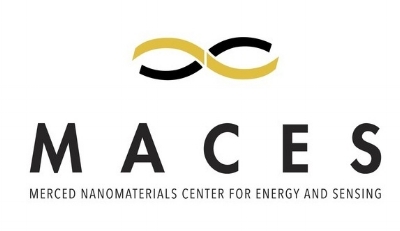Our faculty are involved in a variety of large research centers and institutes on campus.
Convergence of Nano-engineered Devices for Environmental and Sustainability Applications (CONDESA)
The National Science Foundation (NSF) NRT Convergence of Nano-engineered Devices for Environmental and Sustainability Applications (CONDESA) program will create a new generation of nano-engineers by cross-training students in molecular biology, physics, chemistry, environmental science, and sustainable systems. The program goal is to create multifunctional, nano-engineered sensors for environmental media (air, soil, and water) and to demonstrate their application in real-world testbeds to assess and solve environmental health and sustainability problems. Monitoring complex, dynamic patterns (“hot spots” and “hot moments”) in environmental properties requires high-resolution sensing, spotlighting the need for low-cost, energy-efficient, nano-enabled sensors. These properties include chemical concentrations, states, and flows associated with pollution, biogeochemical cycling, and risks to human health and ecosystems. Nano-engineering and nanotechnology allow tuning of material properties at the most fundamental atomic scale, therefore making it possible to develop highly specialized platforms for targeted applications. To achieve rapid convergence on effective sensor designs, NRT CONDESA will engage physicists, environmental and materials scientists, and device engineers to collaboratively identify key applications and specifications, guide the choice of transduction and materials, and design an integrated system that is resilient to environmental conditions.
The NSF Research Traineeship (NRT) Program is designed to encourage the development and implementation of bold, new potentially transformative models for STEM graduate education training. The program is dedicated to effective training of STEM graduate students in high priority interdisciplinary or convergent research areas through comprehensive traineeship models that are innovative, evidence-based, and aligned with changing workforce and research needs.
Merced Nanomaterials Center for Energy and Sensing (MACES)
The Merced nAnomaterials Center for Energy and Sensing (MACES), with substantial support from the National Aeronautics and Space Administration (NASA), was launched in the summer of 2015 at UC Merced. MACES serves as a nexus for nanomaterials-based research and education. We are creating innovative functional materials platforms to enable lightweight, compact, high-performance energy conversion and storage for future space missions. We are also developing new types of biosensors critical for planetary exploration, such as health monitoring and disease diagnosis. Education is another key facet of MACES. We have created a vertically integrated STEM education program, and we are committed to increasing student participation in research, particularly for historically underrepresented groups. To nurture the professional development of our students, we continuously refine our research training programs. Importantly, our research and educational programs are complemented by strong infrastructure building and enhancement. For example, MACES is playing a pivotal role in establishing a material characterization facility at UC Merced, the first of its kind in California’s Central Valley.
Health Sciences Research Institute (HSRI)
The Health Sciences Research Institute (HSRI) was established in May 2012 at UC Merced and is the University's focal point for health and medical research. With over 100 faculty members across UC Merced's three schools (Engineering, Natural Sciences, and Social Sciences, Humanities & Arts), HSRI aims to foster world-renowned researchers through its work to improve the health of the people in the San Joaquin Valley and beyond. HSRI members are also engaged in translational research, evaluation and effectiveness research, and public health systems and services research. San Joaquin Valley regional health issues include asthma, valley fever (coccidioidomycosis), obesity, diabetes, cancer, hypertension, heart disease, risky teen behaviors, teen tobacco use, sexually transmitted diseases, hepatitis, and many others. The opportunities to address the growing and complex health issues of the San Joaquin Valley and beyond require inter- and multidisciplinary teams. HSRI’s collaborative multidisciplinary research clusters and community emphasis provide an opportunity to rapidly develop, test, and disseminate new ways of improving health and delivering healthcare. This will help establish UC Merced as a world-renowned research university while improving the health of the people in the San Joaquin Valley.
Center for Chemical Theory and Computation (ccCAT)
The Center for Chemical Computation and Theory (ccCAT) at UC Merced brings together a collaborative group of theorists in chemistry and physics to address challenges in fundamental theory and computational methods for modeling functional transition metal compounds in complex environments.This project is funded by the Department of Energy, Basic Energy Sciences, in the Computational and Theoretical Chemistry (CTC) and Condensed Phase and Interfacial Molecular Science (CPIMS) programs.
Consortium for High-Energy Density Science (CfHEDS)
The goal of the Consortium for High-Energy Density Science (CfHEDS) is to create and sustain a workforce pipeline to NNSA National Laboratories by increasing the number of students interested in science, by developing new scientists, and by building improved scientific educational and research capacity. This will be accomplished at three minority-serving institutions, enabling them to develop scientists who are well prepared to work in the NNSA-critical field of High Energy Density Science (HEDS), in two thrusts. The first thrust consists of education, outreach, and internship programs. We will establish and sustain a pipeline from minority-serving undergraduate institutions, to minority-serving graduate programs, and to Lawrence Livermore National Laboratory (LLNL). The second thrust focuses on understanding the effects of a dense plasma on bound states, a topic of high impact in HED plasma physics. A theoretical model that transitions matter from a cold, solid state to a HED plasma is sorely lacking and impacts our understanding of energy deposition, equation of state, and ionization balance as matter is heated to the plasma state. Once the HED plasma state is achieved, there remains great uncertainty in determining the number of bound states due to ionization potential depression-IPD. The technical work will create a strong, sustainable technical collaboration between the academic partners and LLNL. It will provide opportunities for students and faculty from these institutions to participate in collaborative research and have access to LLNL’s world-class HED research facilities.








